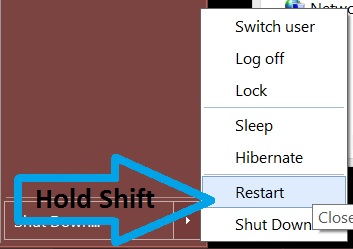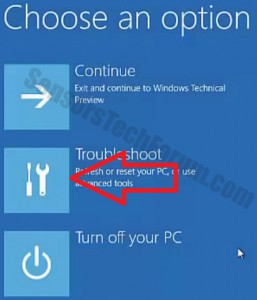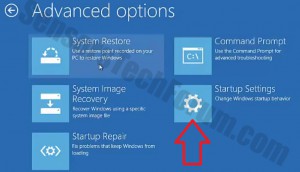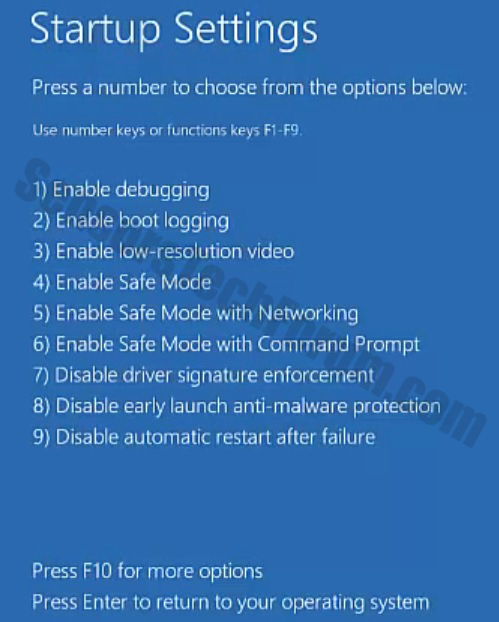| Name | Trojan:Win32/Colisi.F |
| Type | Trojan Horse |
| Short Description | It may be exploiting a legitimate .dll file on the infected system. |
| Symptoms | System malfunctions. |
| Distribution Method | Via social engineering, unsafe browsing, etc. |
| Detection tool | Download SpyHunter, to See If Your System Has Been Affected By Trojan:Win32/Colisi.F |
Trojan:Win32/Colisi.F is a Trojan horse that has several variants. According to security researchers, the threat can be located in the Google directory of the infected system. The main file of the Trojan most likely is GoogleUpdate.dll. Since the .dll file appears to be legitimate and a part of Google Chrome, malware such a Trojan horse can be exploiting it. As we have written many times, malicious software can deploy legitimate .exe and .dll files for its dubious processes.
Trojan:Win32/Colisi.F Threat Description

Our research indicates that the Trojan has various aliases and variants. Furthermore, different AV solutions appear to have different detection names. Trojan:Win32/Colisi.F may be distributed together with Trojan:Win32/Colisi.B.
One user has shared that the two Trojans were detected in the Google directory on his computer after he had upgraded to Windows 10. The two detections happened 14 days apart from one another.
A malware scan by VirusTotal on Trojan:Win32/Colisi.A shows that the Trojan’s detection rate is pretty high:
- Microsoft detects it as Trojan:Win32/Colisi.A.
- ESET-NOD32 detects it as Win32/ExtenBro.AZ.
- AVG detects it as Atros.ADXF.
- Avast detects it as Win32:Agent-AYUR [Trj].
- Kaspersky detects it as Trojan.Win32.ExtenBro.afs.
- McAfee detects it as Trojan-FGMU!286F29CBF928.
- Symantec detects it as Trojan Horse.
- TrendMicro detects it as TROJ_KILIM.SMCX.
- Malwarebytes detects it as TrojanDownloader.
As a total, 30 of 57 anti-virus programs detect the Trojan.
Trojan:Win32/Colisi.F Distribution Path
Trojan horses are mostly spread via some form of social engineering, trying to trick users into thinking that it is a legitimate program. Other distribution tactics involve clicking on corrupted links and suspicious email attachments, executing drive-by downloads and downloading infected files.
The most common Trojans that affect average users appear to be:
- Trojan-Downloaders. Trojan-Downloaders are designed to download and install the latest versions of malware onto the system, such as Trojans, PUPs, and adware.
- Trojan-Droppers. Trojan-Droppers are deployed by cyber criminals to install Trojans and computer viruses, or in other cases to prevent their detection.
- Trojan-Spies. Trojan-Spy programs spy on user activities and track the data entered via the keyboard. They can also take screenshots and obtain the list of running applications.
- Trojan-Mailfinder. They are designed to collect email addresses from users. Collected emails can then be used in aggressive spam campaigns.
Of course, there are many types of Trojan horses. The question is…
How to Stay Protected against Trojans and Remove Trojan:Win32/Colisi.F?
The safest way to deal with the threat is using professional help. You can either call a friend that knows his way around PC issues and particularly malware, or you can fix the problem yourself. The quickest way to do that is by installing a powerful anti-malware program to scan and clean the system. Additionally, we have provided a removal manual below the article.

Spy Hunter scanner will only detect the threat. If you want the threat to be automatically removed, you need to purchase the full version of the anti-malware tool.Find Out More About SpyHunter Anti-Malware Tool / How to Uninstall SpyHunter
Preparation before removing Trojan:Win32/Colisi.F.
Before starting the actual removal process, we recommend that you do the following preparation steps.
- Make sure you have these instructions always open and in front of your eyes.
- Do a backup of all of your files, even if they could be damaged. You should back up your data with a cloud backup solution and insure your files against any type of loss, even from the most severe threats.
- Be patient as this could take a while.
- Scan for Malware
- Fix Registries
- Remove Virus Files
Step 1: Scan for Trojan:Win32/Colisi.F with SpyHunter Anti-Malware Tool



Step 2: Clean any registries, created by Trojan:Win32/Colisi.F on your computer.
The usually targeted registries of Windows machines are the following:
- HKEY_LOCAL_MACHINE\Software\Microsoft\Windows\CurrentVersion\Run
- HKEY_CURRENT_USER\Software\Microsoft\Windows\CurrentVersion\Run
- HKEY_LOCAL_MACHINE\Software\Microsoft\Windows\CurrentVersion\RunOnce
- HKEY_CURRENT_USER\Software\Microsoft\Windows\CurrentVersion\RunOnce
You can access them by opening the Windows registry editor and deleting any values, created by Trojan:Win32/Colisi.F there. This can happen by following the steps underneath:


 Tip: To find a virus-created value, you can right-click on it and click "Modify" to see which file it is set to run. If this is the virus file location, remove the value.
Tip: To find a virus-created value, you can right-click on it and click "Modify" to see which file it is set to run. If this is the virus file location, remove the value.Step 3: Find virus files created by Trojan:Win32/Colisi.F on your PC.
1.For Windows 8, 8.1 and 10.
For Newer Windows Operating Systems
1: On your keyboard press + R and write explorer.exe in the Run text box and then click on the Ok button.

2: Click on your PC from the quick access bar. This is usually an icon with a monitor and its name is either “My Computer”, “My PC” or “This PC” or whatever you have named it.

3: Navigate to the search box in the top-right of your PC's screen and type “fileextension:” and after which type the file extension. If you are looking for malicious executables, an example may be "fileextension:exe". After doing that, leave a space and type the file name you believe the malware has created. Here is how it may appear if your file has been found:

N.B. We recommend to wait for the green loading bar in the navigation box to fill up in case the PC is looking for the file and hasn't found it yet.
2.For Windows XP, Vista, and 7.
For Older Windows Operating Systems
In older Windows OS's the conventional approach should be the effective one:
1: Click on the Start Menu icon (usually on your bottom-left) and then choose the Search preference.

2: After the search window appears, choose More Advanced Options from the search assistant box. Another way is by clicking on All Files and Folders.

3: After that type the name of the file you are looking for and click on the Search button. This might take some time after which results will appear. If you have found the malicious file, you may copy or open its location by right-clicking on it.
Now you should be able to discover any file on Windows as long as it is on your hard drive and is not concealed via special software.
Trojan:Win32/Colisi.F FAQ
What Does Trojan:Win32/Colisi.F Trojan Do?
The Trojan:Win32/Colisi.F Trojan is a malicious computer program designed to disrupt, damage, or gain unauthorized access to a computer system.
It can be used to steal sensitive data, gain control over a system, or launch other malicious activities.
Can Trojans Steal Passwords?
Yes, Trojans, like Trojan:Win32/Colisi.F, can steal passwords. These malicious programs are designed to gain access to a user's computer, spy on victims and steal sensitive information such as banking details and passwords.
Can Trojan:Win32/Colisi.F Trojan Hide Itself?
Yes, it can. A Trojan can use various techniques to mask itself, including rootkits, encryption, and obfuscation, to hide from security scanners and evade detection.
Can a Trojan be Removed by Factory Reset?
Yes, a Trojan can be removed by factory resetting your device. This is because it will restore the device to its original state, eliminating any malicious software that may have been installed. Bear in mind, that there are more sophisticated Trojans, that leave backdoors and reinfect even after factory reset.
Can Trojan:Win32/Colisi.F Trojan Infect WiFi?
Yes, it is possible for a Trojan to infect WiFi networks. When a user connects to the infected network, the Trojan can spread to other connected devices and can access sensitive information on the network.
Can Trojans Be Deleted?
Yes, Trojans can be deleted. This is typically done by running a powerful anti-virus or anti-malware program that is designed to detect and remove malicious files. In some cases, manual deletion of the Trojan may also be necessary.
Can Trojans Steal Files?
Yes, Trojans can steal files if they are installed on a computer. This is done by allowing the malware author or user to gain access to the computer and then steal the files stored on it.
Which Anti-Malware Can Remove Trojans?
Anti-malware programs such as SpyHunter are capable of scanning for and removing Trojans from your computer. It is important to keep your anti-malware up to date and regularly scan your system for any malicious software.
Can Trojans Infect USB?
Yes, Trojans can infect USB devices. USB Trojans typically spread through malicious files downloaded from the internet or shared via email, allowing the hacker to gain access to a user's confidential data.
About the Trojan:Win32/Colisi.F Research
The content we publish on SensorsTechForum.com, this Trojan:Win32/Colisi.F how-to removal guide included, is the outcome of extensive research, hard work and our team’s devotion to help you remove the specific trojan problem.
How did we conduct the research on Trojan:Win32/Colisi.F?
Please note that our research is based on an independent investigation. We are in contact with independent security researchers, thanks to which we receive daily updates on the latest malware definitions, including the various types of trojans (backdoor, downloader, infostealer, ransom, etc.)
Furthermore, the research behind the Trojan:Win32/Colisi.F threat is backed with VirusTotal.
To better understand the threat posed by trojans, please refer to the following articles which provide knowledgeable details.


















